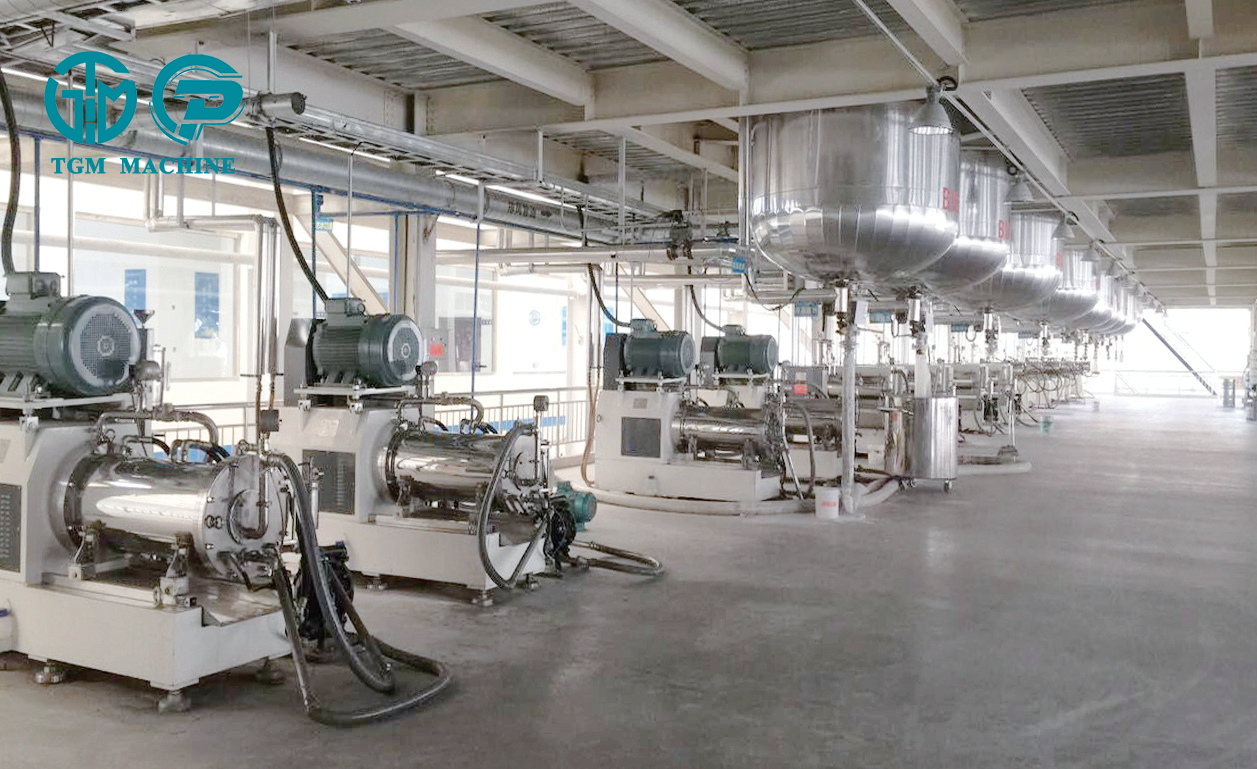Email cannot be empty
Password cannot be empty
Email format error
Email cannot be empty
Email already exists
6-20 characters(letters plus numbers only)
The password is inconsistent
Email format error
Email cannot be empty
Email does not exist
6-20 characters(letters plus numbers only)
The password is inconsistent


The Alchemy of Color: How Automotive Paint is Born
We admire a car's flawless finish on the showroom floor, but few of us think about the incredible journey that splash of color took from a chemist's lab to the vehicle's sheet metal. Producing automotive paint is a precise science, a form of modern alchemy where raw materials are transformed into a durable, beautiful, and complex coating.
Let's walk through the fascinating production process.
Phase 1: The Recipe - Formulation
It all starts with a formula. This is not a simple list of ingredients; it's a highly guarded, complex recipe designed to achieve specific performance goals. Chemists and formulators must balance:
-
Color: The precise hue, opacity, and effect.
-
Durability: Resistance to UV rays, acid rain, bird droppings, and chips.
-
Application: How it sprays, flows, and levels out.
-
Drying/Curing Time: How long it takes to set and fully harden.
-
Environmental Regulations: Compliance with VOC (Volatile Organic Compound) laws.
The main ingredients in the "paint soup" are:
-
Pigments: These are the fine, solid particles that provide color and opacity. They can be inorganic (like iron oxide for reds) or organic (complex carbon-based molecules for bright colors).
-
Effect Materials: This is what creates special finishes:
-
Aluminum Flakes for metallic paint.
-
Mica/Coated Silica Flakes for pearlescent paint.
-
-
Resins (Binders): These are the "glue" of the paint. They form the film that binds the pigments together and adheres the entire coating to the car's surface. Think of them as the skeleton of the paint film. Common types include acrylics, polyurethanes, and epoxies.
-
Solvents: These are the liquids that keep the pigments and resins in a liquid state for easy application. They make the paint sprayable. After application, the solvents evaporate. Traditionally, these were powerful hydrocarbons, but today, water is often used as a primary solvent in basecoats to meet environmental standards.
-
Additives: These are the "secret sauce"—small quantities of specialized chemicals that drastically alter the paint's properties. Examples include:
-
UV Stabilizers to prevent fading.
-
Flow Agents to help the paint level out and avoid orange peel.
-
Catalysts to trigger the hardening (curing) process.
-
Phase 2: The "Making Of" - The Manufacturing Process
Once the recipe is set, large-scale production begins in a controlled industrial setting. Here’s how it happens:
Step 1: Pre-Mixing (The Rough Blend)
The precise amounts of pigments, resins, and solvents are weighed and added to a large tank called a premixer. Here, they are roughly blended together into a thick, lumpy paste. This step ensures the pigments are fully wetted by the resin.
Step 2: Dispersion (The Grind)
This is the most critical step for achieving color consistency and gloss. The rough paste is pumped into a high-speed mill. The most common type is a Sand Mill or Bead Mill.
-
The mill is filled with thousands of tiny, hard grinding media (like ceramic beads).
-
As the paste is pumped through the mill, the beads are agitated at high speed, smashing into the pigment clumps.
-
This process shears the pigment agglomerates down to their primary particle size, which is microscopic (often less than 10 microns).
-
The goal is to evenly distribute every pigment particle throughout the resin, ensuring no clumps and a perfectly smooth, consistent color.
Step 3: Let-Down (The Final Mix)
The now finely ground paste, called the "mill-base," is transferred to a larger mixing tank. Here, the remaining resins, solvents, and special additives are stirred in. This step fine-tunes the final color, adjusts the viscosity (thickness), and incorporates all the components that give the paint its specific durability and application properties.
Step 4: Quality Control (The Vigilant Eye)
Before any paint is canned, it undergoes rigorous testing. Technicians will:
-
Spray Out Panels: Apply the paint to small metal panels to check for color accuracy, gloss, and texture against the standard.
-
Measure Physical Properties: Test viscosity, density, and drying time.
-
Performance Tests: Expose sample panels to UV light in weatherometers, spray them with chemicals, and subject them to stone-chip tests to simulate years of wear in a short time.
Step 5: Filtration and Packaging
Once approved, the final product is pumped through fine filters to remove any last impurities and then filled into cans, drums, or large totes for shipment to automotive plants or body shops.
A Special Note: The Clearcoat
The clearcoat is produced in a similar way, but without pigments. Its formulation is focused on maximizing hardness, UV resistance, and gloss. It often contains special additives like silica for scratch resistance or UV absorbers that act like sunscreen for the color layers beneath.

